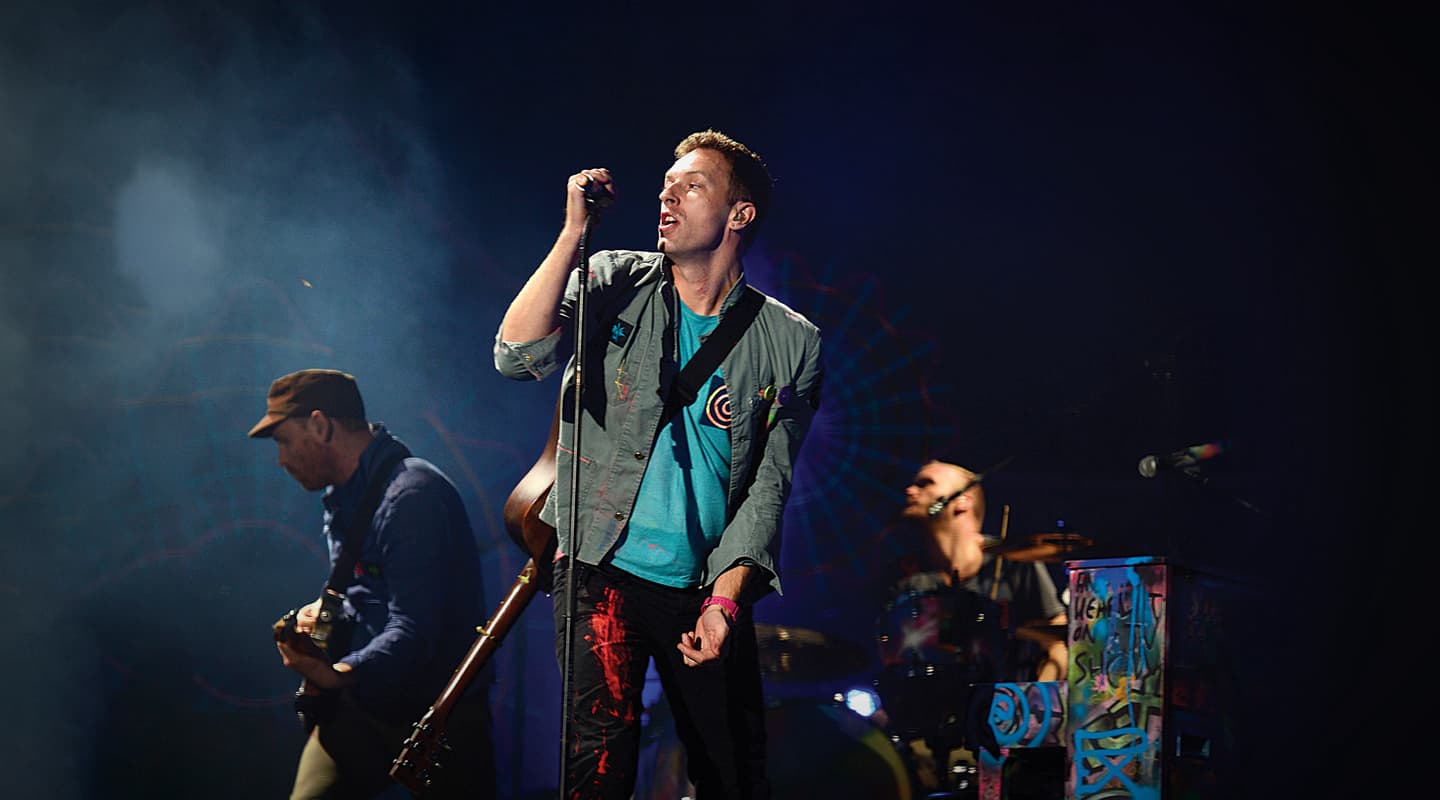
Playtime: Coldplay Live
Coldplay cares. 50,000+ punters piled into Etihad stadium, and they all enjoyed nearfield sound.
Main Photo: Marty Philbey
If you mix gigs for fun or for a living, here’s a lifestyle to aspire to: Fly the world in first-class luxury, stay in primo hotels, travel with the band to stadium gigs, mix a bunch of highly-professional musicians with the very best gear available, wave goodbye to your tech team at the end of the final encore, hop in the band’s limo to be wined and dined somewhere very pleasant indeed… and in another couple of days, repeat as necessary.
You could say FOH engineer Dan Green is one very lucky bastard.
But you might also acknowledge he’s an indispensable cog in the machine that keeps the world’s biggest touring band purring. At least, that’s clearly what Coldplay must be thinking.
After working briefly with the band on the recording of X&Y, Dan has been involved in building Coldplay’s studio in North London, and remained on the recording team for Viva la Vida and Mylo Xyloto. At this level it’s unusual for someone in Dan’s position to occupy pivotal roles in the studio and on the road, but it does provide him with a unique insight into how best to get 50,000 people in a venue like Etihad Stadium, Melbourne, rocking.
I rang Dan the morning after, at his deluxo hotel in Sydney (he and the band flew back to Sydney after the concert in a private jet) for a chat. I guess I was imagining him on a balcony overlooking an opalescent harbour, sipping on a Nespresso and picking at a fruit platter… probably in a white hotel robe. I started by asking him how the studio and live disciplines influence each other on a tour like this:
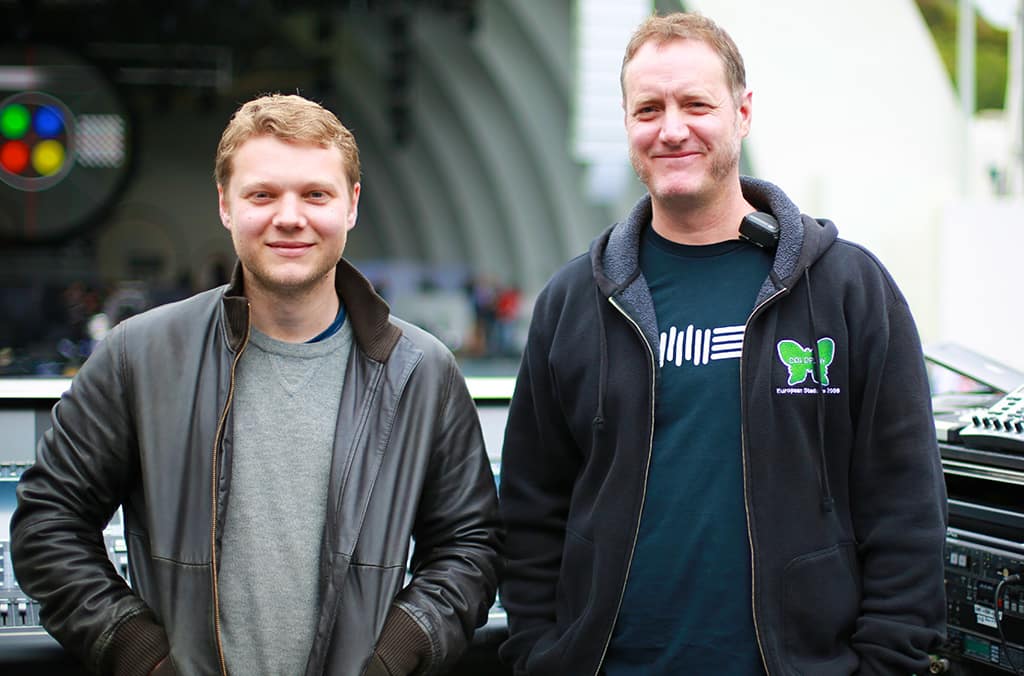
COLD CALL
Dan Green: We have live performance on our minds right from when a song is taking shape in the studio.
AT: To the extent of constraining some of your studio production so it would translate well live?
DG: Exactly. You don’t want to cram too many elements into a song when you’re playing it live. We’re performing in stadiums and arenas with huge reverb times, which means you’ve got to work hard to ensure the vocals and key elements shine through. I tend to just stick to the core elements of a song, and I’m not so particular about including all the subtle atmospherics.
Which doesn’t mean there’s no detail or subtlety. For example, Jonny [Buckland, guitars] has a lot of little melodies that weave around the vocals, so I’ve got to make sure that people can appreciate those parts. But ultimately, it’s about giving the audience what it needs to sing along, and providing a solid bass and drum sound to keep the momentum.
AT: Are you able to borrow much from the studio mic cabinet on tour?
DG: A few bits and bobs, but the demands are very, very different on the road. In the studio, your mic choice can be all about character. But in a live context you’re after mics that reproduce transients very clearly — you need that front-end bite on most sounds to cut through. I mean, you’re not going to stick up a Neumann U67 three metres above and behind the drumkit as a ‘room’ mic, for obvious reasons. So I tend to use more dynamic microphones: SM57s on guitars and a Shure Beta52 on the bass drum. And also the Earthworks microphones which are really good for drums. They’re my close mics and from there I get a sense of depth using reverb and other plug-ins.
AT: You clearly like what the Earthworks mics are doing.
DG: They cut through really nicely and they preserve a lot of the front-end attack of the sound, which is something you really need. In stadiums and arenas you can’t really have a sound that has too much decay because the room has so much decay anyway — ‘sharp’ and ‘short’ wins every time.
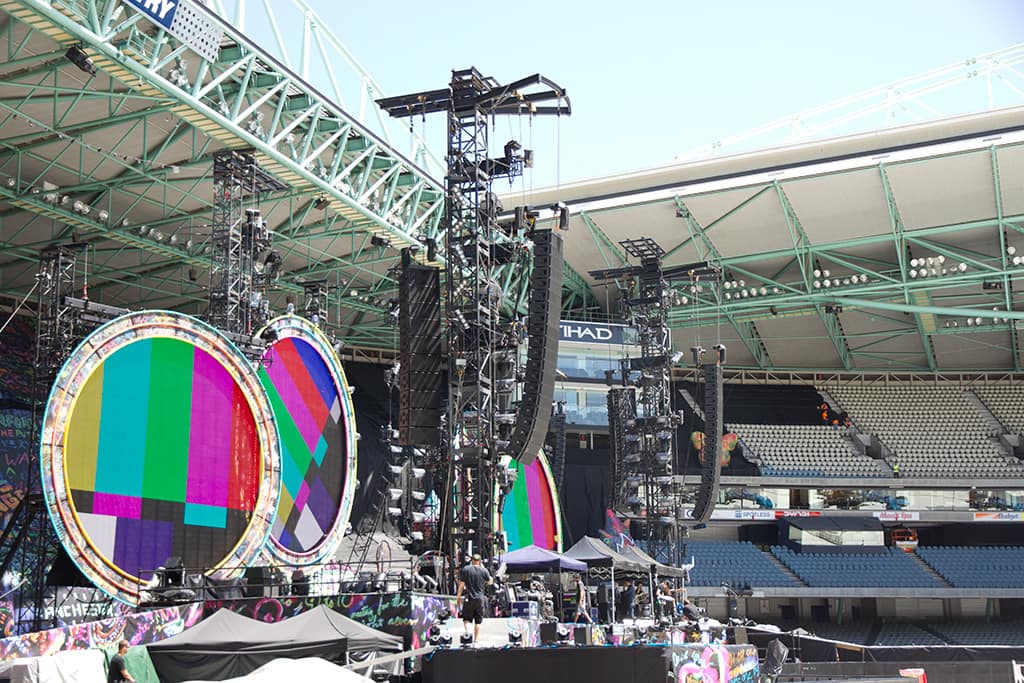


DINING OUT ON LUNCHBOX
AT: I’m fascinated by your 500 series lunchboxes at front of house. What’s going on there exactly?
DG: Anyone who’s worked on a Midas XL4 will remember how you really only needed to give it some gain and push up the fader and you were good to go. Now with digital consoles — and as happy as I am with the Digico SD7 — you don’t get that, especially on drums.
In my search to rediscover that instant ‘analogue’ sound I began to play around with effects pedal-style boxes, but they were a bit flakey. On the other hand, I’ve always found Radial gear to be super-reliable. When it came out with the 500 series Workhouse, I tried out a few different pres, and settled on eight modules of Neve 1073 (which work really well on Chris’s SM58), four of the Helios Type 69-500 EQs (I love what the Helios high/mids do to the guitars) and four Shadow Hills Mono GAMA mic pres.
If anything does go awry with those, there’s a macro on my SD7 that’ll instantly flick back to the preamps on the SD stage rack.
AT: So you can easily A/B the two sources and hear the difference?
DG: I can, and the difference is just incredible. The level is the same but the depth of the sonic image is quite different. I think their impact is cumulative. If you had one or two 1073s I don’t think you’d hear much of a difference.
AT: Are you concerned that if you’re using analogue preamps and/or outboard — routing in and out of the SD7 — you’ll get a bit of phase smear?
DG: I had a few concerns on that front with the drums. What I’m doing is using Waves’ MultiRack [live sound plug-in platform] where I’ve made a dummy plug-in group and I can send every drum-related channel to that group. So regardless of whether that drum element is sourced from an analogue mic pre or a digital plug-in, it becomes aligned. I’ve also done that with other groups of instruments that need to be phase-aligned, and I think that sorts out any kind of latency issues.
AT: Can you tell me a little more about the Waves MultiRack setup?
DG: Well, take, for example, my kick drum sound. I’ve got three kick drum channels. I’ll do a bit of basic kick EQ’ing or processing on the SD7’s console channel, I’ll route those to a group and process the three channels together. In the Waves MultiRack, as a group, I’ll apply a filter and then that goes into an API compressor, and then into an H EQ. By doing it that way — grouping and processing those kick channels together — it helps glue the sound together a little more. Which means if I want a bit more click on my bass drum, rather than EQ it I’ll push up the more clicky microphone which then doesn’t affect the way it fits with all the processing. To me this approach sounds nicer than EQ’ing it in isolation. Then I’ll save that clickier kick drum submix as a snapshot for songs where the bass drum needs to cut through some more.

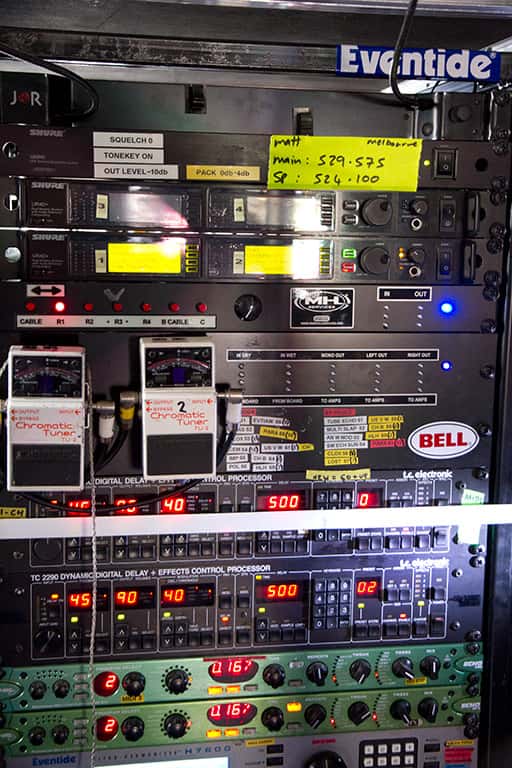
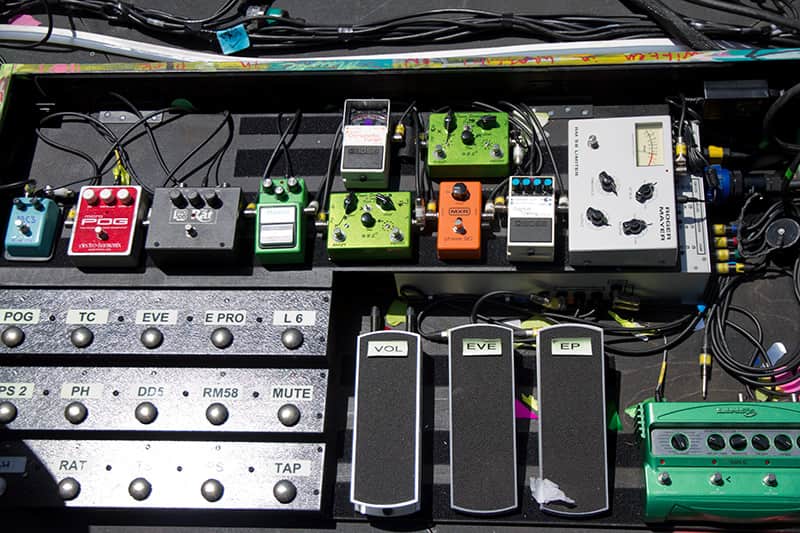

Jonny Buckland’s pedalboard is a two-man lift. Meanwhile, the rack (which is replicated for redundancy’s sake) packs his wireless receivers, TC2290 delays, Line6 processing and an Eventide Harmonizer. The Fender amps are serviced by Shure SM57s, with a coincident Royer SF121 ribbon on one cab.
BOARD & PA
AT: You touched on using the Digico SD7. How’s it working out?
DG: I’ve had it since the start of this tour. Prior to that I was using an Avid Venue and we just ran out of channels. The SD7 gave us the ability to handle all of the channels and it has enough buses such that we can set up mix stems for the broadcast trucks when we need to — preferable to giving them 128 channels, which was just too complicated. For example, going back to my three channels of kick drum, I can simplify that to one channel for the OB truck.
AT: I’ve never seen so many speakers in the air at Etihad Stadium. There’s certainly no sense of the band demanding a ‘bare minimum’ approach.
DG: We’re lucky that the band is up for doing what it takes. Basically they leave that to myself and Tony Smith [system tech] to get the system design we need.
AT: How long have you been using the d&b J Series?
DG: We used them on the Viva tour prior to this one. I just found them to be a line array that has character. I found V-DOSC, and other recent line arrays, are a bit too clean for this band. Take the drums, for example, you won’t hear the crack you’ll get from the J — there’s a pleasant harmonic distortion there that you won’t get from V-DOSC or the like. Saying that, V-DOSC will be perfect for its own thing, but for this particular tour it’s the J sound that I’m after. The J Sub and Infrasub are also great reasons to go with d&b.
AT: I noticed the sub bass wasn’t oppressively high in your mixes — which made for a nice change.
DG: When you’re mixing in stadiums it’s easy to be personally impressed by bass. It’s easy to just think, ‘oh I’m really enjoying the bass’. But a lot of people find it distracting if the bass drum is really pounding — it starts to become annoying after an hour-and-a-half. At dance events? Sure. But with Coldplay, we don’t want it to be physical, you don’t want it to be poking out, you just want it to be a balanced part of the mix as a whole.
Ultimately, it’s about giving the audience what it needs to sing along, and providing a solid bass and drum sound to keep the momentum
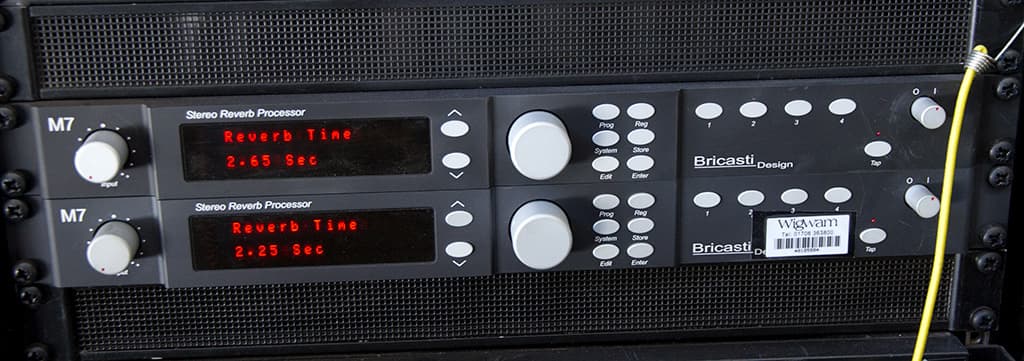


VOCAL PLAY
AT: Could you run me through Chris Martin’s vocal chain?
DG: It starts with a Shure SM58 radio mic which he just loves singing into — the sound and the weight is just right for him. It goes to the Neve 1073 500 series module, and into a channel on the SD7. Then I just use a little bit of channel EQ to clean up the low end, to avoid pumping the compressor unnecessarily — the stage volume is blisteringly loud up there from PA spill, so there’s always going to be some low-end filtering. And then it goes into one of the Waves Puigchild 660 plug-ins. From there, into a Waves H EQ for some general EQ’ing. I really like that EQ for its visual feedback — the spectrum analyser is really handy to quickly pinpoint any frequencies that are poking out or not quite right. Then it finishes with the Waves C6 multiband compressor, which is the most incredible plug-in. I really rely on the C6 for the sound of Chris’s voice because when he’s getting into his low register, his voice is very bassy. But I find if I take some of those overpowering low frequencies out with a regular EQ, when he goes up to his falsetto voice, it sounds a bit thin. With the C6, because it’s a dynamic EQ, as soon as he hits his falsetto voice, all of those rich lows return. Effects-wise, I’ve got an old TC 2290 delay which is MIDI’d up to be part of my snapshot automation. I really like it because it’s hands-on. Saying that, after it’s set up the only control I touch is the tap tempo button. Finally, I have a Bricasti M7 reverb, which I prefer to a Lexicon for its character.
AT: And is it much of a challenge when Chris is running around 20 metres in front of a PA?
DG: No because of the way Tony has zoned it and designed the system, we rarely have any problems with feedback. We know what he’s going to do and we’ve planned in advance for that. And Chris is such a consistent singer and gives out such a good level, it’s not really a problem.
BE PREPARED
AT: Any advice for the next time I’ve got a stadium gig on for 60,000 people?
DG: When the stakes are high, the most important thing is pre-production — the most important thing. I really get involved on a band level. For example, Jonny and I sat down and meticulously planned his guitar rig before we even got on stage. So from pre-production stage we had everything ready to go. Get pre-production right, then by the time the band steps on stage they’ll be supremely confident in their sound, and as the engineer you’ll simply be polishing the sound. Let’s not forget, when you’re getting ready for that first big concert, there are a million other distractions — you’re not really going to get a great deal of time to work on the sound with the band at that point.
So my advice is to make the most of your rehearsal time: getting your input levels right, making the right mic choices and experimenting with mic positions.
AT: All in the preparation then?
DG: Yeah, it’s all in the preparation. Getting things right on a band level, before you’re even mixing. Another huge thing as well is virtual playback. Having a ProTools rig is just amazing because you can stick your headphones on the day after and really hone in on the detail you might miss in the middle of a concert.
I’ll also take notes as a show’s happening so when I come back to it I’ve got a list of things I want to tweak — I just play it back from my ProTools rig and update my snapshots. Even just prior to the gig when the support act is changing over, I’ll be getting into my playback mode and listening through my headphones — it’s never too late for some 11th hour fine-tuning.


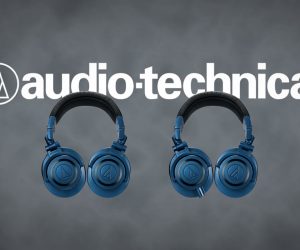
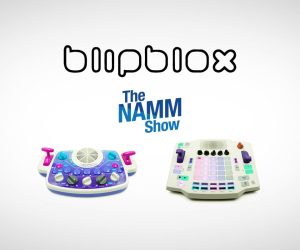

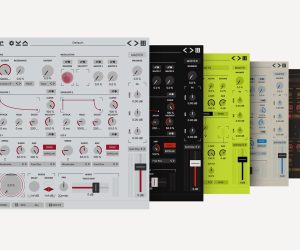
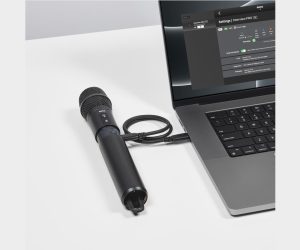
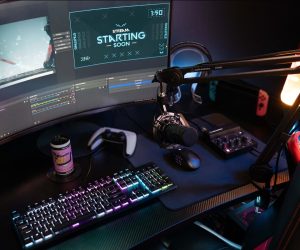
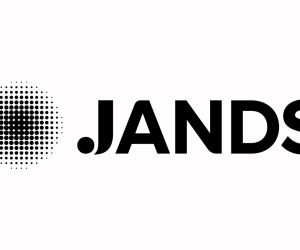
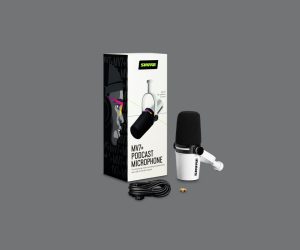
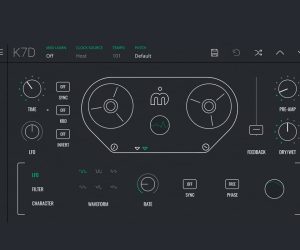
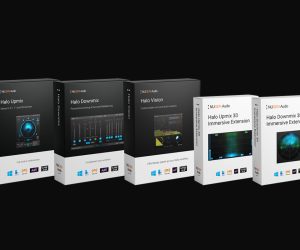
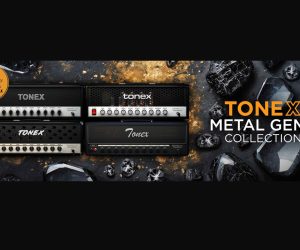



RESPONSES